Menu
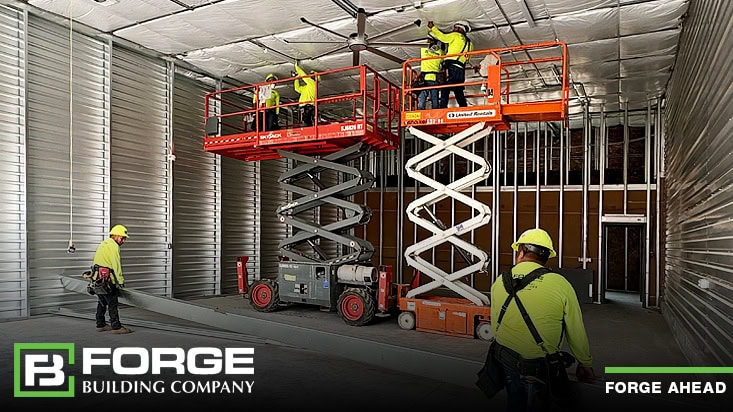
The self storage and metal building sectors have proven resilient, but the next year and a half will be marked by stabilization rather than rapid expansion. Developers and investors who understand the shifting landscape will be best positioned to capture opportunities while managing risk.
In our previous blog, “2025 Self Storage Industry Growth Projections and Trends,” we looked at top trends and innovations expected to shape the construction industry this year, and in our blog, “Is Self Storage a Good Investment for 2025?” we addressed the factors of why this asset class is still an appealing real estate investment.
Below is Forge Building Company’s take on where the market is headed in the next 12-18 months and how to position your next project to win.
After record demand in recent years, the self storage market is normalizing. Still, long-term demand drivers such as downsizing, mobility, and e-commerce support steady growth. In the next 12-18 months, expect modest rent gains, selective new builds, and an increased focus on operational efficiency and tenant retention.
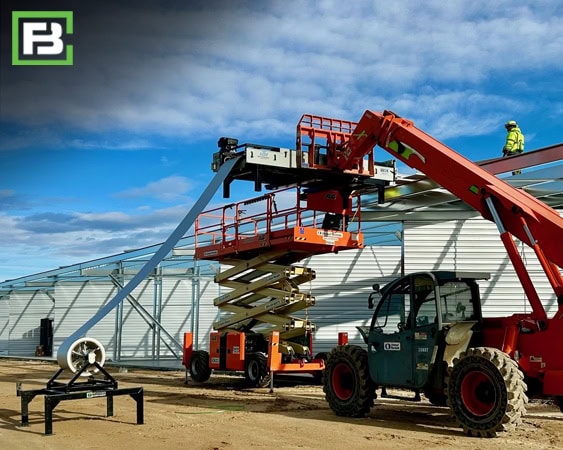
Metal buildings remain a cornerstone for storage, industrial, and flex projects. While steel and material prices have been volatile, forecasts suggest some easing ahead. At the same time, innovations in design, prefabrication, and sustainability are helping developers control costs and differentiate projects. Locking in on contracts early and partnering with reliable developers, such as Forge Building Company, will be key in the near term.
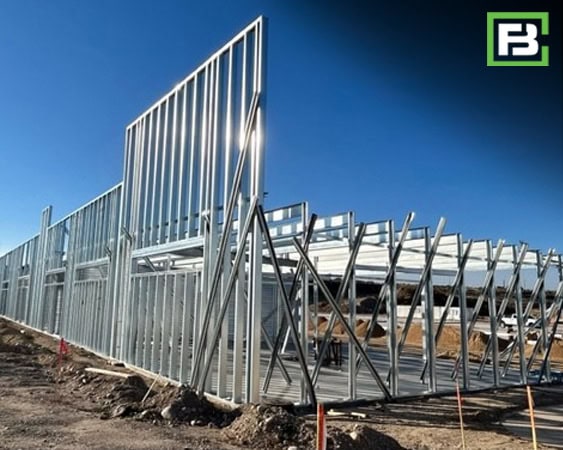 There’s been growing discussion around the potential impact of rising steel tariffs on construction and development. While some of these concerns are valid, it’s important to view them through the lens of today’s self storage market realities—particularly in how developers are adapting to evolving economic conditions.
There’s been growing discussion around the potential impact of rising steel tariffs on construction and development. While some of these concerns are valid, it’s important to view them through the lens of today’s self storage market realities—particularly in how developers are adapting to evolving economic conditions.
The self storage industry has demonstrated resilience and adaptability in the face of past economic challenges. That’s why it is key to working with a developer who will ensure your project is well-planned, factoring in current costs and potential future fluctuations, positioning themselves to meet market demand effectively, and capitalizing on long-term growth.
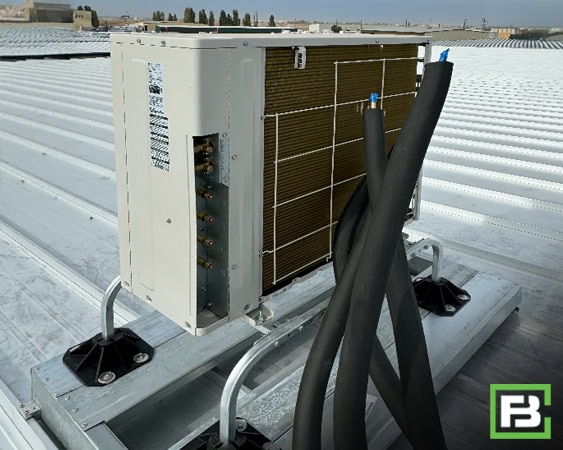 Here’s our advice.
Here’s our advice.

The next 12-18 months are ones of moderation, not slowdown. Disciplined underwriting, cost awareness, and market selectivity will define success. With demand stabilizing, supply easing, and capital slowly thawing, well-located storage and flex assets can enter 2026 and 2027 in an enviable position, provided you lock cost risk early and design for operational efficiency.
Those who balance patience with preparedness and leverage the efficiencies of steel metal building experts, such as Forge Building Company, will be positioned to thrive as conditions improve.
Let’s build it right.
References
1. Yardi Matrix. (2025, September 17). Retrieved from yardimatrix.com: https://www.yardi.com/news/press-releases/yardi-matrix-report-highlights-encouraging-u-s-self-storage-sector-trends/
2. Affleck, J. (2024, November 6). CBRE Investment Management. Retrieved from https://www.cbreim.com/: https://www.cbreim.com/insights/articles/unpacking-self-storage-a-sector-on-the-move
3. Chin, H. (2025, August 7). CBRE. Retrieved from https://www.cbre.com/: https://www.cbre.com/insights/podcasts/2025-bonus-ep-the-commercial-real-estate-outlook-for-the-rest-of-2025
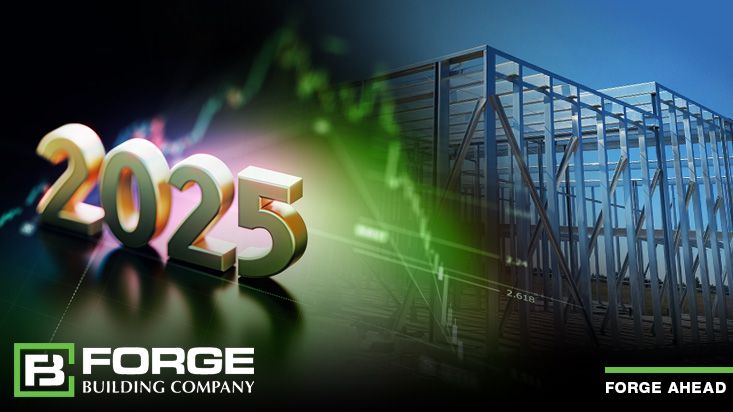
As 2024 winds down, it is a good time to reflect on the current year and look to the year ahead. In a report from Deloitte Research Center for Energy & Industrials, “The construction industry in 2024 was defined by strong fundamentals, marked by a 10% increase in nominal value added and a 12% increase in gross output. Construction spending crossed US $2 trillion and maintained a balanced trajectory in the first half of 2024”1.
Nevertheless, the industry had its fair share of challenges. High interest rates and price inflation continued to affect the commercial segment. Looking ahead to 2025, there are reasons to be more optimistic. According to the Deloitte analysis of the Oxford Economic Model, short-term interest rates are likely to decrease gradually over the next couple of years, following a 50 basis point interest rate cut by the Federal Reserve in September 2024. The improving economic conditions are likely to influence construction demand across various segments.
Overall, the US construction industry is likely to record moderate growth in the medium term with slowing inflation and a supportive monetary policy. However, the construction industry, and especially those utilizing steel, such as Forge, is not without additional challenges.
Here’s a look at some of the top trends and innovations expected to shape the construction industry in 20252.
 In 2025, sustainability will continue to be a priority in construction. Governments, stakeholders, and the public are pressing for greener buildings to mitigate environmental impact and reduce carbon footprints.
In 2025, sustainability will continue to be a priority in construction. Governments, stakeholders, and the public are pressing for greener buildings to mitigate environmental impact and reduce carbon footprints.
The push for net-zero buildings by 2050 has also influenced design approaches and material choices. Technologies like carbon-capturing concrete and bio-based materials, including hempcrete and timber alternatives, are gaining traction. Modular and prefabricated buildings, which produce less waste and consume fewer resources, are also gaining favor. In addition, many governments have implemented regulations to limit emissions in construction processes, pushing companies to adopt sustainable practices or risk fines and reputational damage.
Modular and off-site construction techniques are expected to flourish in 2025 as companies look for efficient ways to manage time and reduce costs. Prefabricated components can be manufactured off-site and assembled at the project location, reducing waste, speeding up project timelines, and minimizing on-site disruptions.
This approach is especially advantageous for urban construction, where space is limited and labor costs are high. Modular construction also allows for greater quality control as components are built in controlled factory environments. As these techniques become more mainstream, they’re likely to reshape how commercial structures are built.
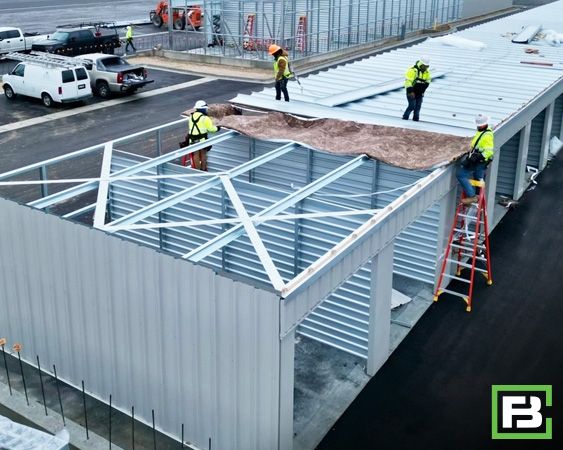 With climate change increasing the frequency and severity of natural disasters, building resilient infrastructure is a growing priority. In 2025, more construction projects are expected to integrate features that help buildings withstand extreme weather events like hurricanes, floods, and wildfires. Materials designed for resilience, such as impact-resistant glass, fireproofing materials, and flood-resistant foundations, are becoming standard in vulnerable areas. Additionally, adaptable infrastructure—such as buildings designed for repurposing rather than demolition—is gaining popularity. As cities continue to grow, adaptive buildings reduce the need for new construction and preserve resources.
With climate change increasing the frequency and severity of natural disasters, building resilient infrastructure is a growing priority. In 2025, more construction projects are expected to integrate features that help buildings withstand extreme weather events like hurricanes, floods, and wildfires. Materials designed for resilience, such as impact-resistant glass, fireproofing materials, and flood-resistant foundations, are becoming standard in vulnerable areas. Additionally, adaptable infrastructure—such as buildings designed for repurposing rather than demolition—is gaining popularity. As cities continue to grow, adaptive buildings reduce the need for new construction and preserve resources.
Governments worldwide are tightening construction regulations to meet environmental targets and improve safety standards. Regulations related to carbon emissions, waste management, and energy efficiency are becoming more stringent. At the same time, incentives are being offered for sustainable building practices, such as tax breaks, grants, and financing options for projects that meet high environmental standards.
On the flip side, 2025 will also have its challenges.
On September 5th, the Department of Commerce announced the antidumping duty (AD) and countervailing duty (CVD) investigations on steel imports coming from ten countries3. Over the next several months, this investigation could drive domestic steel prices up in anticipation that these countries are guilty of dumping. If these countries are found guilty, a duty will be applied to all imported steel. When the price of imports goes up, the domestic steel mills will likely counter by raising their prices too.
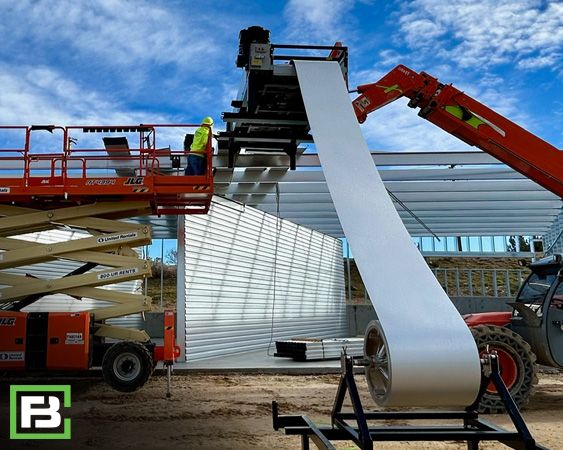 Forge Building Company has noticed that since the announcement of this investigation, CRU steel pricing has started increasing. It is unknown at what rate the mills will escalate pricing or at what interval; however, it is the company’s professional opinion, based on experience, that prices are going to trend up over the next year.
Forge Building Company has noticed that since the announcement of this investigation, CRU steel pricing has started increasing. It is unknown at what rate the mills will escalate pricing or at what interval; however, it is the company’s professional opinion, based on experience, that prices are going to trend up over the next year.
During 2024, there was a lot of price correction in the market due to the aftermath of COVID-19 pandemic. The Forge team watched steel prices steadily decreasing over the last year; however, economists believe that there will be a higher demand for steel in 2025. When this is taken into account along with the impacts of the AD/CVD investigation, then it is very likely that prices for steel will increase.
Another trend to watch for 2025 is new legislation affecting the commercial (or self storage sector). While each state has its own laws regarding the operation of a self storage business, there are often similarities among them. The team at Forge has addressed these in previous years. See:
New Laws for the New Year that Could Impact Your Storage Business
2024 Self Storage Industry Growth Projections and Trends
Here’s a summary of some of the new laws taking effect next year4.
For 2025, the construction industry is moving toward a more sustainable, tech-driven, and resilient future. While labor shortages and regulatory hurdles will present challenges, they also push the industry toward innovation. The emphasis on sustainability, modular construction, and smart infrastructure is reshaping the industry’s landscape, making it an exciting time for both seasoned professionals and new entrants. As the construction industry evolves to meet these demands, companies, such as Forge, that embrace change, invest in digital transformation, and prioritize sustainability will be best positioned to thrive in the years to come.

Works Cited
1. akingump.com. (2024, September 12). Retrieved from Akin: https://www.akingump.com/en/insights/alerts/new-antidumping-and-countervailing-duty-petitions-on-certain-corrosion-resistant-steel-products-from-ten-countries
2. azclc.com. (2024, 6 November). Retrieved from Arizona Contractor License Center: https://www.azclc.com/blog/construction-industry-outlook-for-2025-trends-challenges-and-innovations
3. Deloitte.com. (2024, November 4). Retrieved from Deloitte Research Center for Energy & Industrials: https://www2.deloitte.com/us/en/insights/industry/engineering-and-construction/engineering-and-construction-industry-outlook.html
4. Oblinger, A. (2024, October 5). insideselfstorage.com. Retrieved from Inside Self-Storage: https://www.insideselfstorage.com/legal-issues/the-modernization-of-state-self-storage-laws-recent-changes-and-the-modifications-on-the-horizon